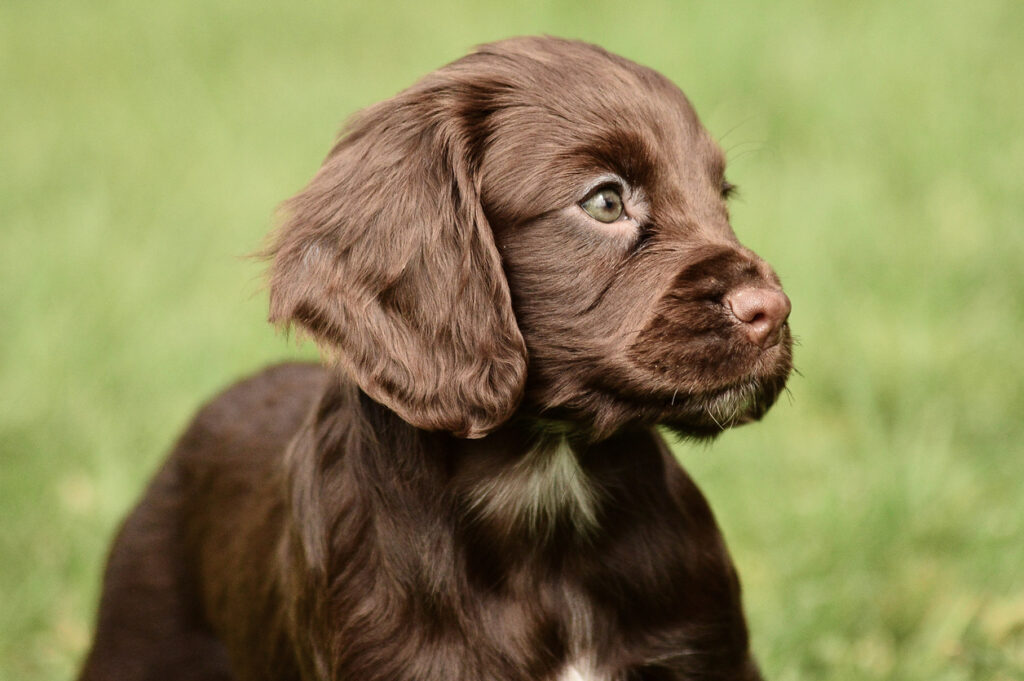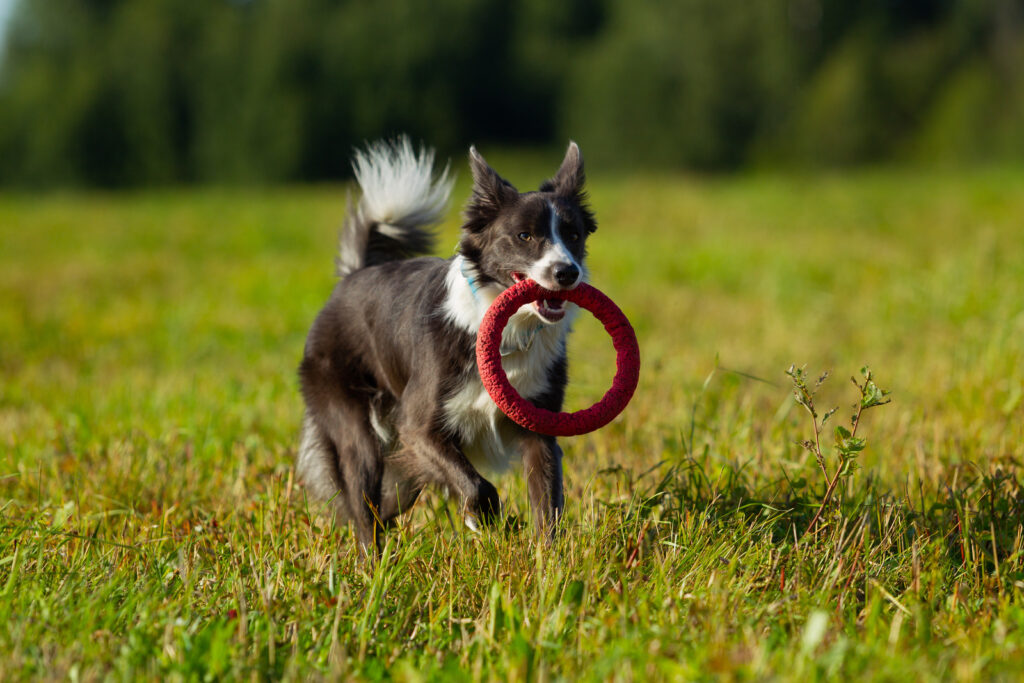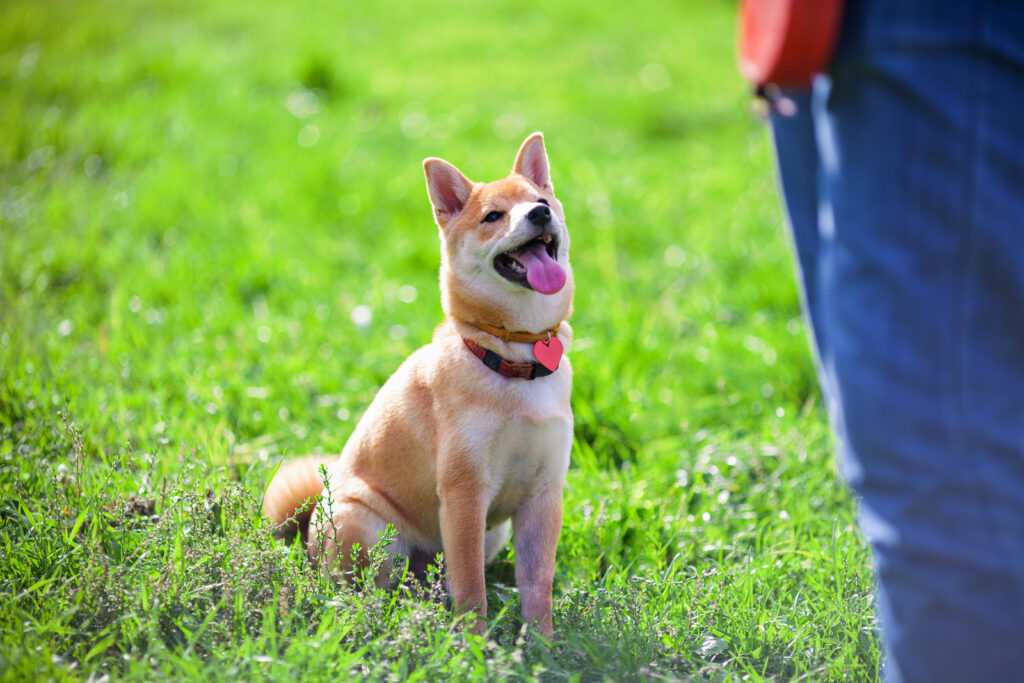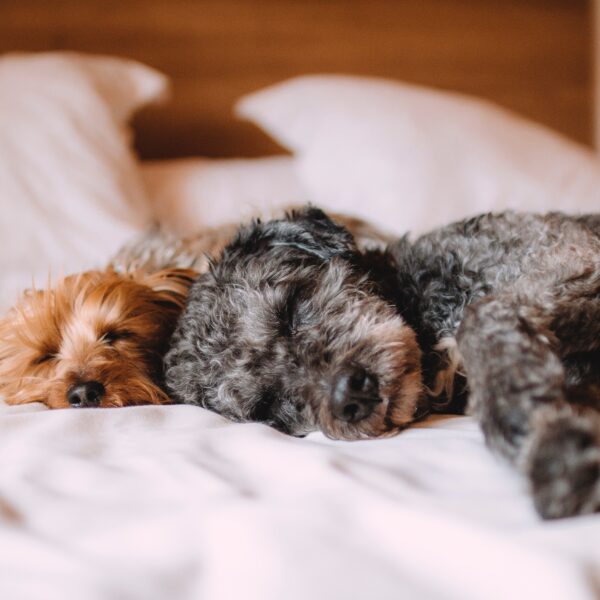…and teaching an old dog new tricks.
Dog training involves teaching your pet a huge variety of skills and behaviours, including:
- House-training such as knowing where to go to the toilet.
- Safety training like learning to come back when called.
- Important life skills such as keeping calm and entertained when home alone.
- Learning how to interact with people, other pets and the world around them.
However, dog training is also a really great way to strengthen the bond with your pet. This means training sessions should always aim to be a positive experience for you and your pooch. Read on for our top tips for puppy training, plus advice for older pets. 🐶
Tips for puppy training
There is a lot of advice out there on how to train a puppy. It can take time and patience to work out the best way to train your pet, as some pups will be more food motivated than others, and everyone learns at different rates. Here are some general tips to bear in mind:
- Keep things fun and positive! Have some tasty treats and exciting toys at the ready to reward good behaviour.
- Remember that puppies will learn better when they’re not tired, so pick a time in the day when they are more awake.
- Pick a place that is quiet and free from distractions. As your puppy becomes better at certain behaviours such as recall you may wish to add distractions gradually, to help ensure the training is effective in a real-life situation.
- Keep training commands consistent to avoid confusion.
- Sessions should be short but regular, to reinforce what your pet has learnt while avoiding boredom.
- Do not punish your pet and try not to show your frustration. There are a range of strategies for dealing with negative behaviour, such as ignoring it, redirecting it to become positive, or using interruptive commands. If in doubt, speak to a qualified canine behaviourist for advice.

When to start puppy training
There’s no set schedule for puppy training, although it is important to cover effective socialisation during the first few months of life. Some pups will also have started to learn certain skills from their mum or the breeder. Here is a rough guide for training you could implement at different ages:
8-10 weeks: Toilet training, crate training, sit and stay commands, socialisation with a small group of people, name recognition, redirection of mouthing behaviours.
10-12 weeks: Lead and collar training in the garden, heel and down commands, wider socialisation with humans, impulse control commands (such as ‘wait’, ‘stay’, and ‘leave it’), threshold training (waiting at open doorways).
12-16 weeks: Socialisation with other puppies when vaccines permit, getting used to outdoor noises such as traffic, building on previously taught commands with greater distractions.
4-6 months: Recall and ‘heel’ on walks, building on previous training at home.
How to crate train a puppy
A key thing to remember is that you want your puppy to view their crate as a safe space, where they have positive experiences. This means you shouldn’t use the crate as a spot to pop them when they have been naughty.
Ideally the crate should be in a quiet, calm part of the house and it must be large enough for your dog to stand up and move around. There should be enough extra room for bedding and a water bowl. You also need to think about whether your pet will be in their crate at night time.
There are several different methods to crate train, but whichever you pick should include plenty of positive reinforcement. Here’s one option:
- First get your puppy used to their crate with the door open. Reward them with praise when they go near the crate, and start to encourage them to explore inside by using treats as an incentive.
- To strengthen the positive association with their crate, you can start to feed your puppy their meals inside (still with the door open). Take care not to progress to this step too early as it will be most effective if your puppy has spent some time becoming familiar with the crate first. Otherwise, meal times could become stressful.
- You can start to partially close the door while your pup is eating. Gradually progressing to closing it fully.
- The next step is to increase the length of time that the door remains closed after a meal. Once they are happy settling down after their meals, you can start to leave the room for a few minutes.
- Now that your puppy should have positive associations with their crate, you can start training them to use it outside of meal times. Teach them the ‘crate’ or ‘bed’ command, and use training treats as a reward.
Dog training recall
Training your pet to come when called is vital if you are planning to walk them off the lead. However, it can also form the basis of fun hide-and-seek style games, and boost your relationship with your pet by making you a fun person to be around. The Dogs Trust has put together a detailed guide for training your puppy, including a very handy and practical section on recall training.
Older pets – tips for dog training
Much of the advice on how to train your dog when they are older, is similar to training puppies. However, older dogs can take longer to learn. If you are rehoming an adult dog, it can take some time to get them settled in their new environment and most rehoming centres should offer advice on useful training.
Even if you have had your doggo for several years, they can sometimes benefit from a bit of training to refresh their memory! Plus, it is great mental enrichment and can form a great part of their regular routine on an ongoing basis.

How old is my dog in human years?
This is tricky to estimate, and will vary depending on breed life expectancy too. However, as a rough guide a 1-year-old doggo equates to a teenage human (sounds about right!) and a 2-year-old dog is like a 24-year-old person. After than each extra dog year is equivalent to 4/5 human ones. Whatever age your pet is, they are never too old to learn something new, within the limits of their physical capability.
Tricks to teach your dog
Tricks should never be solely for performance, but many dogs can find this a fun way to interact with their owner. It can be best to teach ‘tricks’ that are useful. For example, ‘paw’ is a good way to get your dog used to having their feet checked for grass seeds after walks.

DIY dog enrichment games
Pretty much any kind of training can be great mental enrichment for your pet. Interactive games such as hide-and-seek or searching for scattered treats are popular options. You can also repurpose cardboard rolls by stuffing these with dog treats and crunched up paper for a homemade puzzle toy.
Found these tips for puppy training helpful? Take a look at our new puppy checklist and tips for new puppy owners.
Join Vital Pet Club’s e-news to be the first to hear about exclusive pet freebies, and pet care tips! Sign up below…


